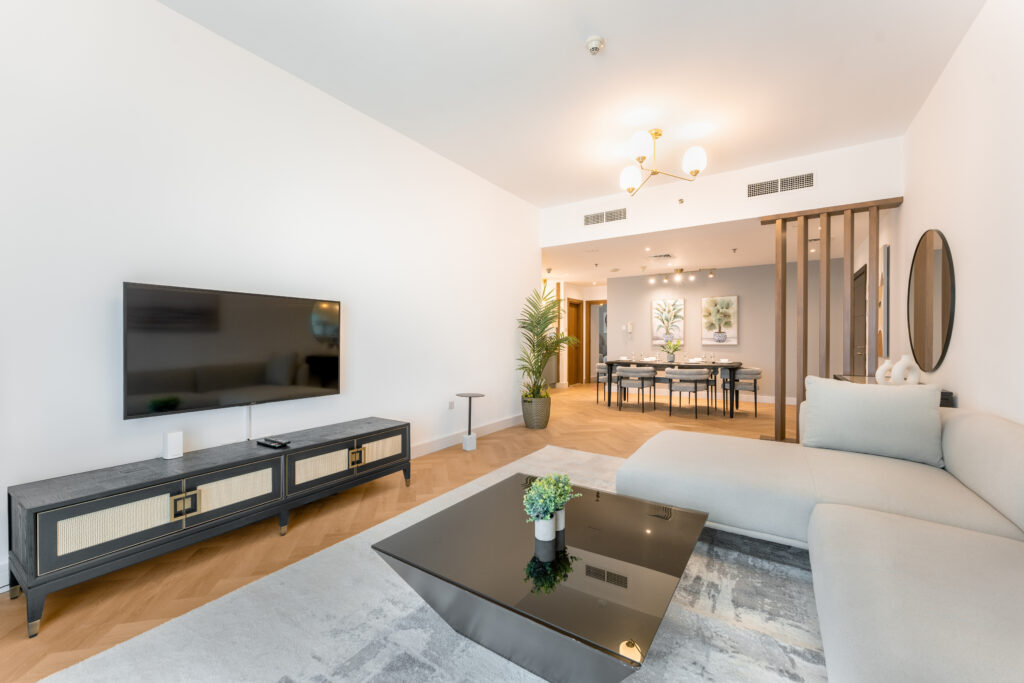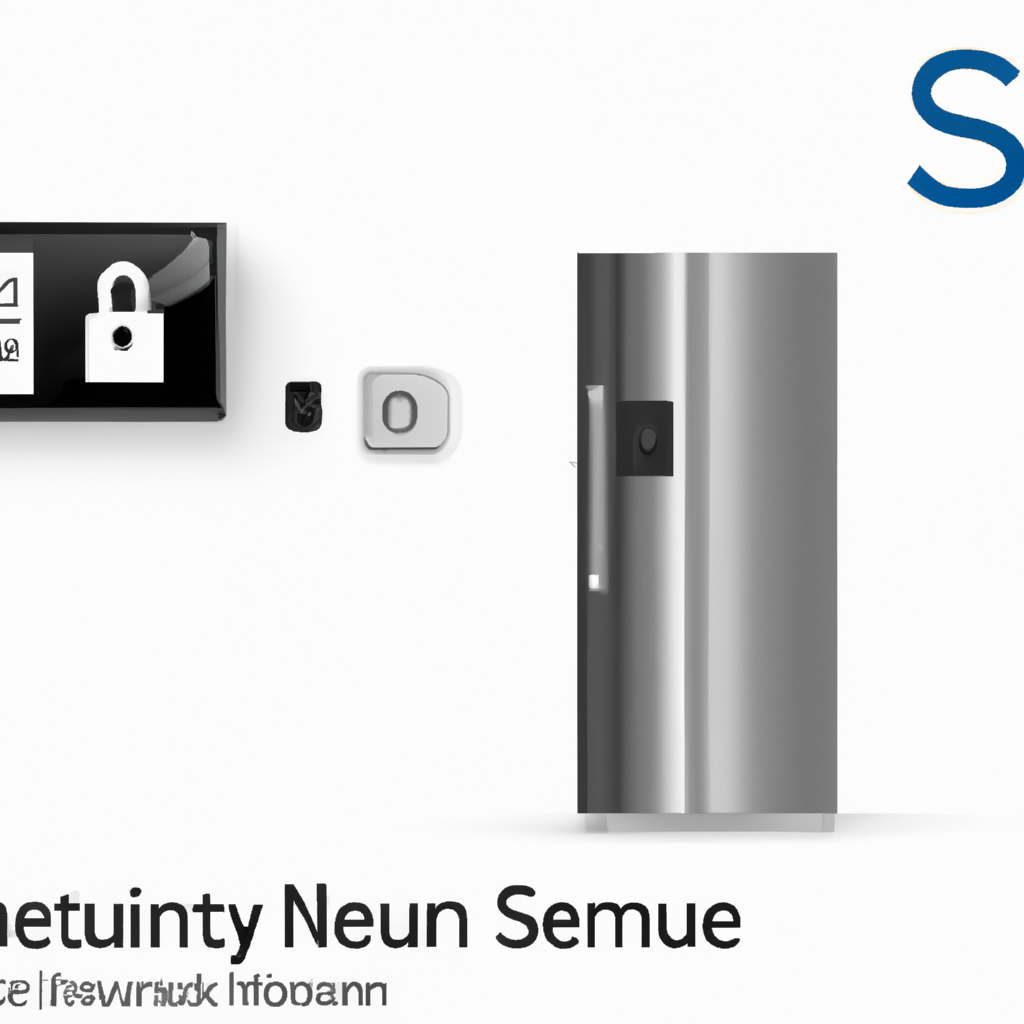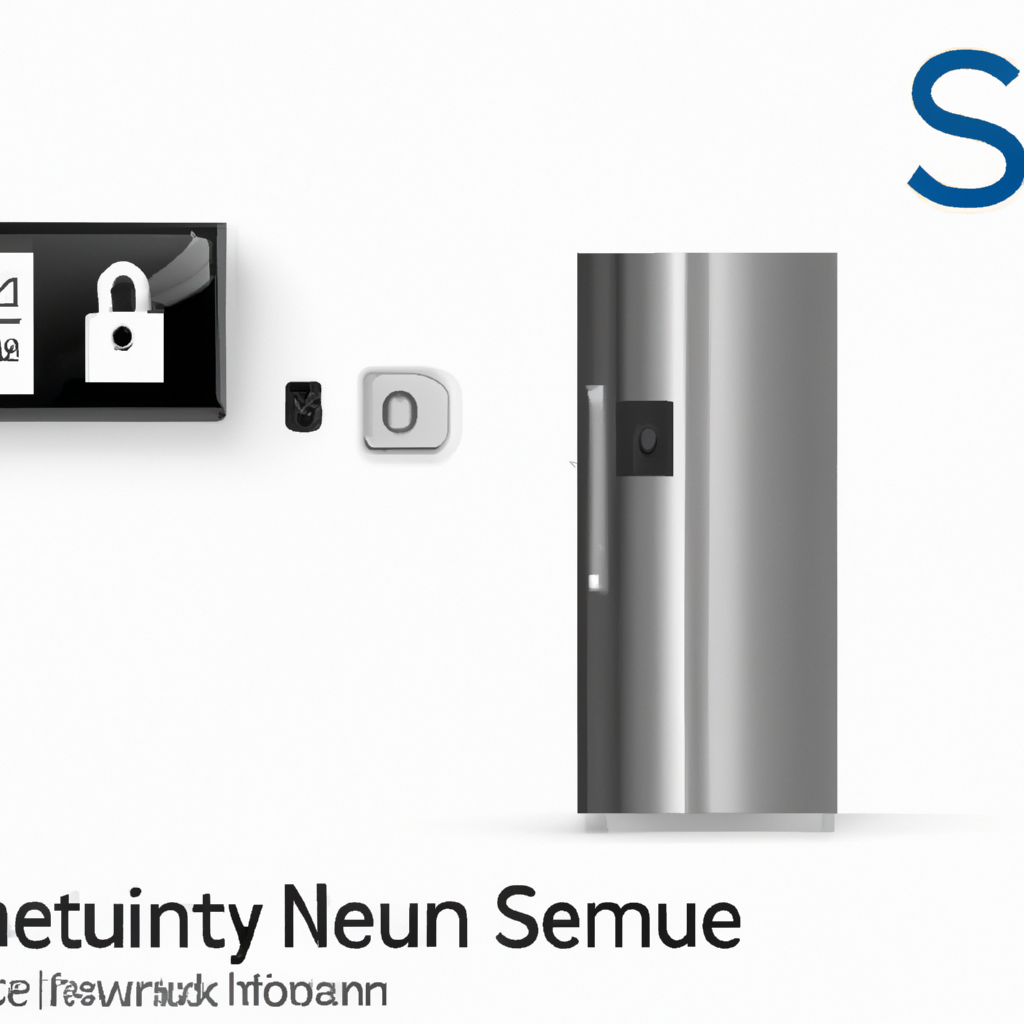Imagine having the convenience and peace of mind that comes with a smart home security system seamlessly integrating with your existing home automation setup. With technology rapidly advancing, many homeowners are wondering if it’s possible to consolidate their smart devices and create a cohesive, efficient network. The answer to this question lies in exploring the compatibility between smart home security systems and existing home automation setups. By understanding the potential benefits and considerations, you can determine whether this integration is right for you.
Overview
Introduction to smart home security and home automation setups
Welcome to the world of smart home security and home automation setups! In this article, we will explore the exciting advancements in technology that have made it possible for you to automate various aspects of your home, including security and convenience. We will delve into the components of smart home security systems, the benefits they offer, and how they can be integrated with existing home automation setups. By the end of this article, you will have a comprehensive understanding of the possibilities that lie ahead and be equipped with the knowledge to create your own smart and secure home.
Understanding Smart Home Security
Components of a smart home security system
A smart home security system typically consists of several interconnected components that work together seamlessly to protect your home. These components often include:
- Security Hub: The central control unit of your security system, responsible for managing and monitoring all connected devices.
- Door and Window Sensors: These sensors detect any unauthorized opening or closing of doors and windows, triggering an alert.
- Motion Sensors: These sensors can detect motion and are used to detect any unusual activity inside or outside your home.
- Security Cameras: Cameras placed strategically around your property provide real-time video surveillance and monitoring.
- Smart Locks: These locks can be controlled remotely, allowing you to lock or unlock your doors through a mobile app, keypad, or voice command.
- Alarm Systems: These systems sound an alarm in case of a security breach, alerting you and potentially deterring intruders.
- Security Monitoring Service: Some smart home security systems offer professional monitoring services that will notify emergency services in the event of a security breach.
Benefits of smart home security systems
Investing in a smart home security system offers numerous benefits for homeowners. Firstly, it provides increased peace of mind by offering enhanced security and protection for your home and loved ones. With real-time monitoring and alerts, you can feel confident knowing that any potential threats can be promptly addressed.
Additionally, smart home security systems provide convenience and ease of use. Many systems can be controlled remotely through a mobile app, allowing you to monitor and manage your home’s security from anywhere. This means you can check on your home, arm or disarm the security system, and even receive notifications when doors or windows are opened – all with a simple tap on your smartphone.
Furthermore, smart home security systems often integrate seamlessly with other smart devices and home automation setups, enabling you to create a comprehensive smart home ecosystem. Whether it’s integrating with your smart lights, thermostats, or voice assistants, the possibilities for automation and customization are endless.

Exploring Existing Home Automation Setups
What is a home automation setup?
Home automation refers to the ability to control various aspects of your home, such as lighting, temperature, appliances, and entertainment systems, through a centralized system or mobile app. With home automation, you can conveniently automate routine tasks and create customized settings to suit your preferences.
Benefits of home automation setups
Home automation setups offer a range of benefits for homeowners. Firstly, they enhance convenience by allowing you to control multiple devices and systems from a single interface. Instead of manually adjusting lights, thermostats, and entertainment systems individually, you can set schedules or control them remotely, streamlining your daily routines.
Secondly, home automation can lead to energy efficiency and cost savings. By being able to monitor and control energy-consuming devices, you can optimize their usage and reduce unnecessary consumption. For example, you can set your thermostat to adjust automatically when you leave the house, ensuring energy is not wasted on heating or cooling an empty space.
Additionally, home automation setups can provide increased comfort and entertainment options. Imagine arriving home to a warm and well-lit environment, with your favorite music playing softly in the background, all automatically triggered by your arrival. This level of customization and personalization can enhance your overall living experience.
Integration Capabilities
Compatibility between smart home security and home automation setups
One of the most exciting aspects of modern home technology is the ability to integrate different smart devices and systems seamlessly. When it comes to smart home security and home automation, compatibility is a crucial factor to consider. Fortunately, many smart home security systems and home automation setups are designed to work together.
Before proceeding with integration, it is essential to ensure compatibility between your chosen smart home security system and home automation setup. Check the product specifications and compatibility information provided by the manufacturers or consult with a professional to ensure seamless integration.
Types of integrations available
When it comes to integrating smart home security systems with home automation setups, various integration options are available. Some common integration methods include:
- Two-Way Communication: This integration allows your smart home security system to communicate with your home automation setup and vice versa. For example, if your security system detects a break-in, it can automatically trigger your home automation setup to turn on all lights and sound the alarm.
- Sensor Integration: By integrating the sensors from your smart home security system with your home automation setup, you can create more advanced automation scenarios. For instance, if a motion sensor detects movement in a specific area, it can trigger actions like turning on lights or activating specific scenes.
- Voice Control Integration: Voice assistants, such as Amazon Alexa or Google Assistant, are increasingly being integrated into both smart home security systems and home automation setups. This allows you to control various aspects of your home using voice commands, adding convenience and hands-free control.

Challenges and Limitations
Factors affecting integration
While smart home security and home automation integration offers incredible possibilities, there are certain factors that can affect the ease and success of integration. Some key factors to consider include:
- Compatibility: As mentioned earlier, compatibility between different smart devices and systems is crucial for seamless integration. Incompatibility issues can arise if the devices or systems use different communication protocols or if the manufacturers do not provide integration options.
- Connectivity: Reliable internet connectivity is essential for the smooth functioning of integrated smart home systems. Issues with internet connectivity can result in delays or failures in communication between devices and systems.
- Technical Expertise: Integrating smart home security systems with home automation setups may require technical knowledge and expertise. Depending on the complexity of the integration, professional assistance may be necessary to ensure proper setup and configuration.
Potential compatibility issues
While efforts are being made to standardize communication protocols and improve compatibility between devices, compatibility issues may still arise during integration. These issues can manifest as devices not recognizing each other, limited functionality, or inconsistent performance.
To mitigate potential compatibility issues, it is advisable to choose smart devices and systems from reputable brands that prioritize compatibility and offer a wide range of integration options. Additionally, staying up-to-date with firmware updates and ensuring all devices are running the latest software versions can help resolve compatibility issues.
Solutions and workarounds
If you encounter compatibility issues or face challenges during the integration process, there are several potential solutions and workarounds to consider. Firstly, contacting the customer support of the manufacturer can be helpful, as they may have specific troubleshooting steps or firmware updates to address compatibility issues.
Alternatively, utilizing third-party integration platforms or hub devices can bridge the compatibility gap between different smart devices and systems. These platforms act as a central hub, enabling seamless communication and integration between devices that would otherwise be incompatible.
Benefits of Integration
Enhanced security features
By integrating your smart home security system with your home automation setup, you can create a more robust and comprehensive security system. For example, when your smart security system detects a potential security breach, it can automatically trigger a series of actions through your home automation setup. This could include turning on all lights, locking doors, and activating an alarm, effectively deterring potential intruders.
Additionally, integration between your security and automation systems allows for advanced monitoring capabilities. For instance, you can receive real-time alerts on your smartphone when a sensor is triggered or have security camera footage automatically sent to your device when unusual activity is detected. These features offer peace of mind and ensure that you stay informed about the security status of your home at all times.
Convenience and automation
Integration between smart home security and home automation setups brings forth a new level of convenience and automation to your daily life. Imagine seamlessly transitioning from a security mode to a welcome mode as you enter your home. The lights can automatically dim, your favorite playlist starts playing, and the temperature adjusts to your preferred setting – all triggered by the deactivation of your security system.
Furthermore, integration allows you to control multiple aspects of your home through a single interface or voice command. Instead of accessing separate apps or systems, you can use a central control hub or virtual assistant to manage your home security, lighting, entertainment, and more. This level of convenience streamlines your everyday tasks and improves the overall efficiency of your smart home ecosystem.
Cost-saving potentials
Integration between smart home security systems and home automation setups can also lead to potential cost savings. By optimizing energy usage through automation, such as automatically adjusting thermostats or turning off lights when you leave a room, you can reduce energy consumption and lower your utility bills.
Moreover, certain insurance providers may offer discounts or reduced premiums for homes equipped with comprehensive smart home security systems. These systems provide an additional layer of protection and can lower the risk of potential damages or losses, making them an attractive proposition for insurance companies.

Popular Smart Home Security Systems
Leading brands and their offerings
When it comes to smart home security systems, there are several leading brands that offer a wide range of features and functionalities. Some popular brands include:
- Ring: Ring offers a comprehensive lineup of smart home security products, including doorbell cameras, outdoor cameras, indoor cameras, and alarm systems. Their products integrate seamlessly with other Ring devices and provide options for integration with various home automation setups.
- Nest: Nest, a subsidiary of Google, offers a range of smart home security devices, including indoor and outdoor cameras, video doorbells, and alarm systems. Nest products are known for their advanced features, such as facial recognition and intelligent alerts, and can be integrated with other Nest devices and compatible home automation platforms.
- Arlo: Arlo specializes in wire-free, high-definition security camera systems that can be used both indoors and outdoors. Arlo cameras offer advanced motion detection, night vision, and cloud storage options. They can be integrated with other Arlo devices and select home automation platforms.
Features for integration with home automation setups
Many smart home security systems offer compatibility and integration options with popular home automation platforms. Some features and functionalities that facilitate integration include:
- API or SDK Access: Some smart home security systems provide Application Programming Interfaces (APIs) or Software Development Kits (SDKs) that allow developers or enthusiasts to create custom integrations with home automation platforms.
- Compatibility with Voice Assistants: Integration with voice assistants, such as Amazon Alexa or Google Assistant, allows you to control your smart home security system through voice commands. This enables hands-free control and seamless integration with other smart devices in your home.
- IFTTT Integration: IFTTT (If This, Then That) is a popular platform that enables integration between different devices and services. Many smart home security systems offer IFTTT integration, allowing you to create customized automation scenarios and interactions with other devices or services.
Popular Home Automation Setups
Leading brands and their offerings
The home automation market is flourishing, with several leading brands offering comprehensive systems to automate various aspects of your home. Some popular brands known for their home automation offerings include:
- Philips Hue: Philips Hue is a widely recognized brand in the smart lighting space. Their range of smart bulbs, light strips, and other lighting solutions can be controlled through a mobile app or voice assistants, creating immersive lighting experiences and automation possibilities.
- Google Nest: Google Nest, besides its smart home security offerings, provides various home automation devices, including thermostats, smart speakers, and smart displays. These devices integrate seamlessly with other Google Nest products and can be controlled through a central interface or voice commands.
- Samsung SmartThings: Samsung SmartThings is a versatile home automation platform that allows you to control a wide range of compatible smart devices. They offer a hub that serves as a central control unit and support for various protocols, making integration with smart home security systems straightforward.
Features for integration with smart home security systems
To enable integration with smart home security systems, many home automation setups offer integration options and features. Some common integration features include:
- Hub Compatibility: Home automation hubs serve as a central control unit for all your smart devices. Integration between your smart home security system and the hub allows for centralized control and automation of security devices alongside other smart devices.
- Scene Creation: Scene creation is a feature offered by many home automation setups that allows you to create customized settings and scenarios involving multiple devices. By integrating with your smart home security system, you can create scenes that adjust lighting, temperature, and other settings based on security triggers or modes.
- Voice Control Integration: Just like smart home security systems, most home automation setups offer integration with popular voice assistants. This enables you to control your home security devices using voice commands, offering hands-free convenience and integration with other smart devices.

Installation and Setup Process
Steps to integrate smart home security with existing home automation setups
Integrating a smart home security system with an existing home automation setup can be a straightforward process if compatibility is ensured. The specific steps may vary depending on the devices and systems being integrated. However, here is a general overview of the integration process:
- Research Compatibility: Before purchasing any devices or systems, thoroughly research the compatibility between your chosen smart home security system and home automation setup. Check product specifications, compatibility lists, or consult with professionals to ensure seamless integration.
- Set Up Individual Systems: Start by setting up and configuring your smart home security system according to the manufacturer’s instructions. Install surveillance cameras, sensors, and connect the security hub to your home network.
- Set Up Home Automation Hub: If you already have a home automation hub, ensure it is set up and configured correctly. If not, choose a compatible hub and follow the manufacturer’s instructions to set it up and establish connectivity with your smart home security system.
- Enable Integration: Depending on the specific devices and systems being integrated, enabling integration can vary. This may involve linking your smart home security system and home automation setup through a mobile app, entering specific codes or passwords, or following a step-by-step process provided by the manufacturers.
- Test Integration: After enabling integration, thoroughly test the functionality and reliability of the integration. Check if security actions trigger appropriate automation scenarios, ensure devices communicate seamlessly, and verify that alerts and notifications are working as expected.
Professional installation vs. DIY options
When it comes to installing and setting up smart home security systems and home automation setups, you have the option of professional installation or do-it-yourself (DIY) options. Each option has its advantages and considerations to keep in mind.
Professional installation offers the advantage of expertise and ensures that the systems are correctly installed, optimized, and integrated. Professionals can provide guidance on system placement, optimal device configurations, and troubleshoot any issues that may arise during the installation process. However, professional installation typically comes at an additional cost and may require scheduling an appointment.
On the other hand, DIY options provide flexibility and cost savings. Many smart home security systems and home automation setups are designed with simple installation processes in mind, allowing homeowners to set up and integrate the systems themselves. DIY options often come with detailed instructions and customer support, making it accessible to individuals with varying technical expertise. However, DIY installation may require more time and effort on the homeowner’s part, and there may be a learning curve involved.
Before making a decision, consider your budget, technical skills, and comfort level with the installation process. If you feel confident in your abilities and have the necessary tools, DIY installation may be a suitable option. However, if you prefer professional assistance or require complex integration, opting for professional installation may be the best choice.
Considerations Before Integration
Assessing compatibility
Before integrating your smart home security system with your home automation setup, it is crucial to assess compatibility between the devices and systems. Consider the following factors:
- Communication Protocols: Ensure that the devices and systems you plan to integrate use compatible communication protocols, such as Zigbee, Z-Wave, or Wi-Fi.
- Manufacturer Compatibility: Research and verify if the smart home security system and home automation setup have officially stated compatibility or integration options with each other.
- Smart Home Ecosystem: If you already have smart devices from specific brands or ecosystems, check if the smart home security system and home automation setup align with the existing ecosystem. This ensures compatibility and simplifies the integration process.
Determining necessary features
Before integration, determine the specific features and functionalities you require from your smart home security system and home automation setup. Consider factors such as:
- Security Needs: Assess your security priorities and determine the features necessary to meet those needs. This could include specific surveillance capabilities, sensor types, or compatibility with security monitoring services.
- Home Automation Requirements: Evaluate the automation tasks and convenience features you want to achieve. Determine the devices and systems you wish to integrate, such as lighting, thermostats, or entertainment systems.
- Scalability: Consider future expansion and scalability of your smart home setup. Ensure that the smart home security system and home automation setup can accommodate additional devices and integrate with future products or services.
Budget considerations
Integrating smart home security systems with home automation setups may involve additional expenses. Consider the following budget considerations:
- Device Costs: Account for the costs of purchasing smart home security devices and home automation devices. Research different brands, models, and packages to find options that meet your requirements and budget.
- Professional Installation: If you opt for professional installation, factor in the associated costs for labor and assistance. Obtain quotes from multiple providers to compare prices and services.
- Subscription-based Services: Some smart home security systems require subscription-based services for advanced features, cloud storage, or professional monitoring. Consider the ongoing costs associated with such services and evaluate their value for your specific needs.
By assessing compatibility, determining necessary features, and analyzing the budget considerations, you can make informed decisions and ensure a successful integration between your smart home security system and home automation setup.
In conclusion, integrating smart home security with existing home automation setups offers numerous benefits, including enhanced security features, convenience through automation, and the potential for cost savings. By understanding the components and benefits of smart home security systems and home automation setups, as well as the compatibility and integration options available, you can create a comprehensive and personalized smart home ecosystem. With popular brands and their offerings, as well as considerations for installation and setup, you are well-equipped to embark on your journey toward a secure and automated home.











